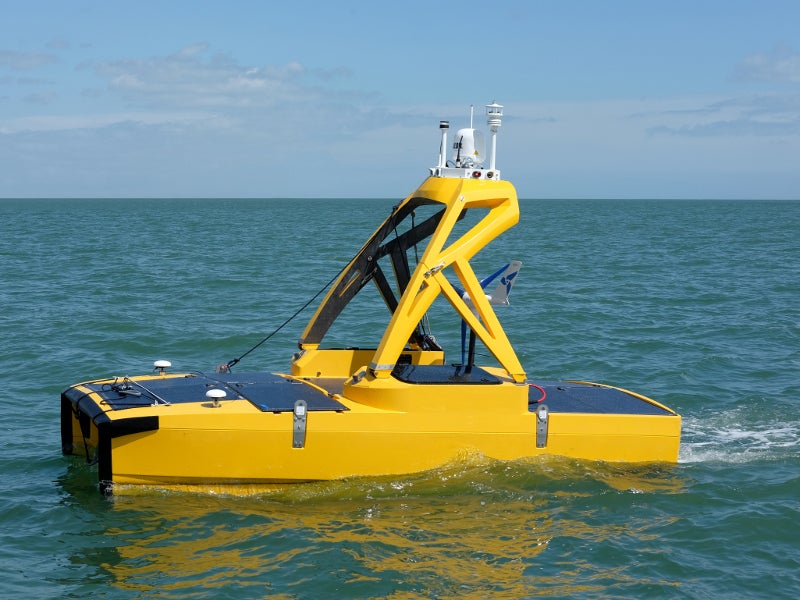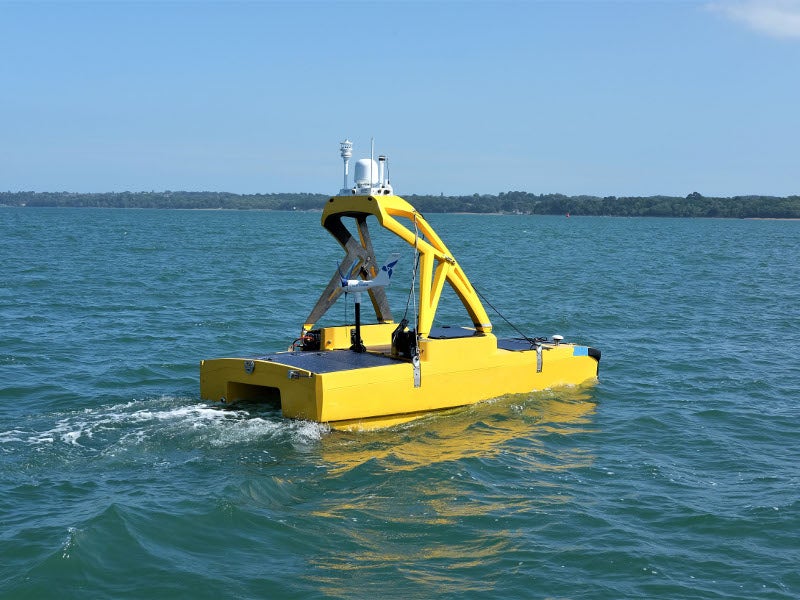C-Enduro is an autonomous surface vehicle (ASV) designed and manufactured by L3 ASV. It offers efficient maritime data gathering, security, and situational awareness capabilities to naval forces.
The ASV offers accurate dataset using advanced mission planning and waypoint navigation at low operating costs. It can be used as a communication platform for autonomous underwater vehicles (AUVs), remotely operated vehicles (ROVs) and submarine gliders.
It is also suitable for a wide range of commercial applications such as oceanographic data collection, renewable energy surveys, marine construction support, CO₂ monitoring surveys and seismic data gathering.
The vehicle took part in an 11-day marine science mission conducted by the National Oceanography Centre in Scotland, UK.
Orders and deliveries
In February 2019, the British Royal Navy received the C-Enduro autonomous vehicle to carry out military data-gathering operations as part of the mine countermeasures and hydrographic capability (MHC) programme.
A total of four C-Enduro ASVs have been delivered to different customers as of February 2019.
C-Enduro autonomous surface vessel design and features
C-Enduro ASV uses a self-righting catamaran hull platform, made of carbon fibre materials. The hull is optimised to offer superior sea-keeping performance and enhanced payload capacity to the operators.
Weather sensors and camera suites are mounted on the mast, while underwater sensors are placed either below the deck, on the keel or on a remotely operated winch.
The autonomous vessel has a 4.75m length, a beam of 2.22m, and height of 3.43m. The draft with keel up measures 0.52m, while the lightship weight is 910kg.
The ASV is equipped with a 0.25m³ modular payload bay, which is expandable up to 0.4m³.
Command and control
The C-Enduro surface vehicle is operator-controlled using L3 ASV’s ASView control system in various control modes, including direct remote control, autonomous, and semi-autonomous.
In the direct remote control mode, the vehicle is directly controlled by the operator using ASV-Helm. The ASV operates automatically using the on-board navigational decision-making in the autonomous mode and is fully assisted by the operator in the semi-autonomous mode.
Communication requirements are served by on-board radio and satellite communication systems.
Navigation aids carried on C-Enduro ASV
The navigation aid for the ASV is provided by on-board sensors, including ASC 360 VIR camera, CTD oceanography instrument, meteorological sensors, acoustic doppler current profiler (ADCP), multi-beam echosounder (MBES), side-scan sonar, acoustic modem, and electronic warfare equipment.
There is an option to fit an advanced collision avoidance system and anti-submarine warfare (ASW) sensors.
Propulsion details
The autonomous surface vehicle’s power system can be tailored with different power options to suit performance requirements and operational environments.
Its primary propulsion system comprises a pair of submersible DC brushless motors, which each drive a fixed-pitch propeller. The auxiliary power options such as diesel generator, wind, and solar systems will maximise the vehicle’s sea endurance.
With a maximum charging power of 4kW, the diesel generator can be used for high payload missions, whereas a three-bladed wind turbine system fitted at the centre of the hull generates a peak power of 500W.
The solar power option consists of a series of ten high-efficiency solar panels, which can be mounted on the bow deck and stern of the vessel to generate 1.1kW of electrical power.
C-Enduro ASV performance
The C-Enduro ASV can travel at a maximum speed of up to 6.5k and operate for more than 30 days depending on its propulsion system configuration, sea conditions, and seasonal changes. It is capable of operating in all maritime conditions.






